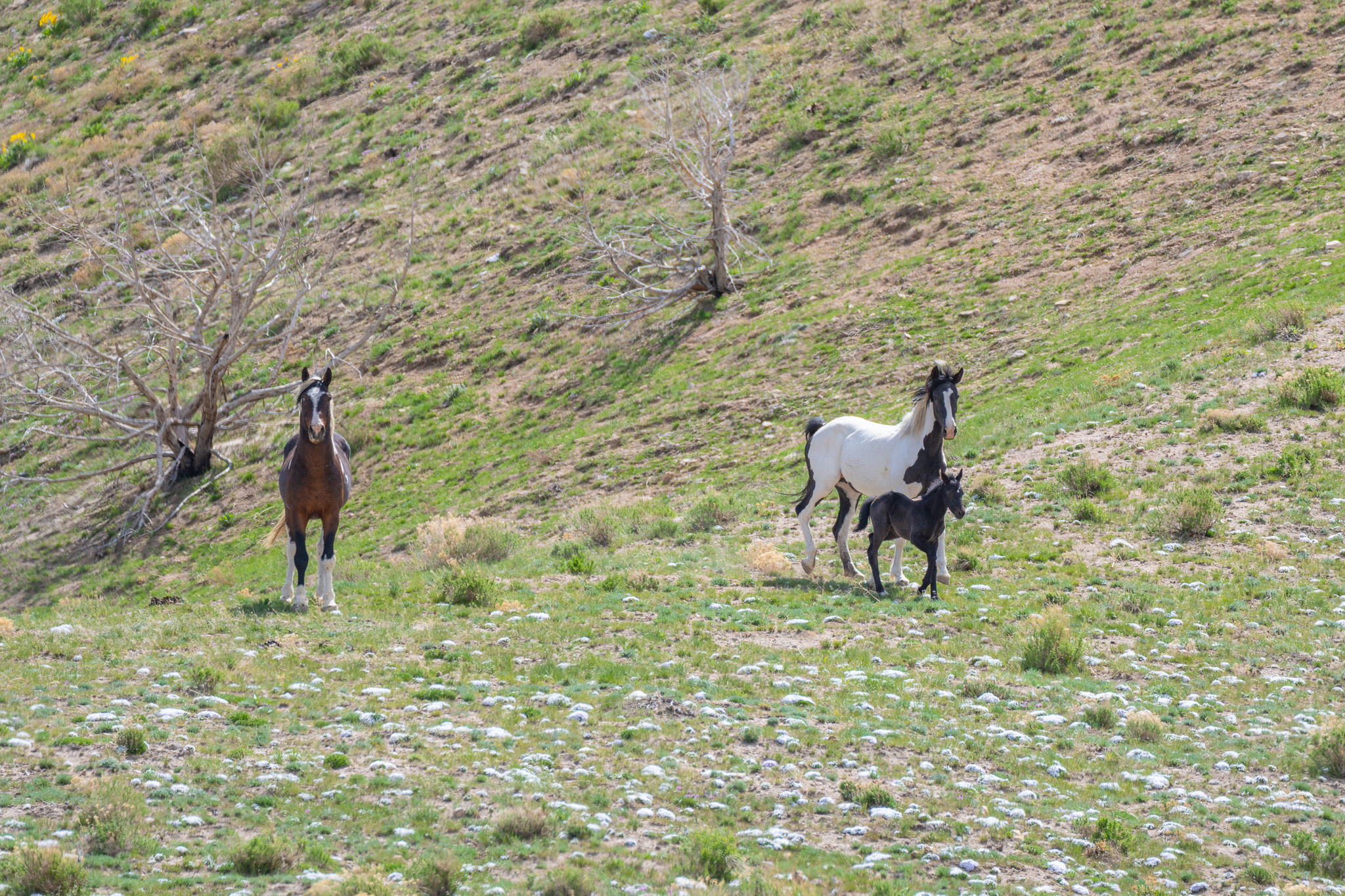By Boo Geisse, Volunteer
(July 31, 2023) Tandin Chapman was working as a civil engineer in Salt Lake City when he got the bug. It was October 2020, and he had just seen wild horses for the very first time: a band of mustangs from the Onaqui Mountain Herd in the west desert of Utah.
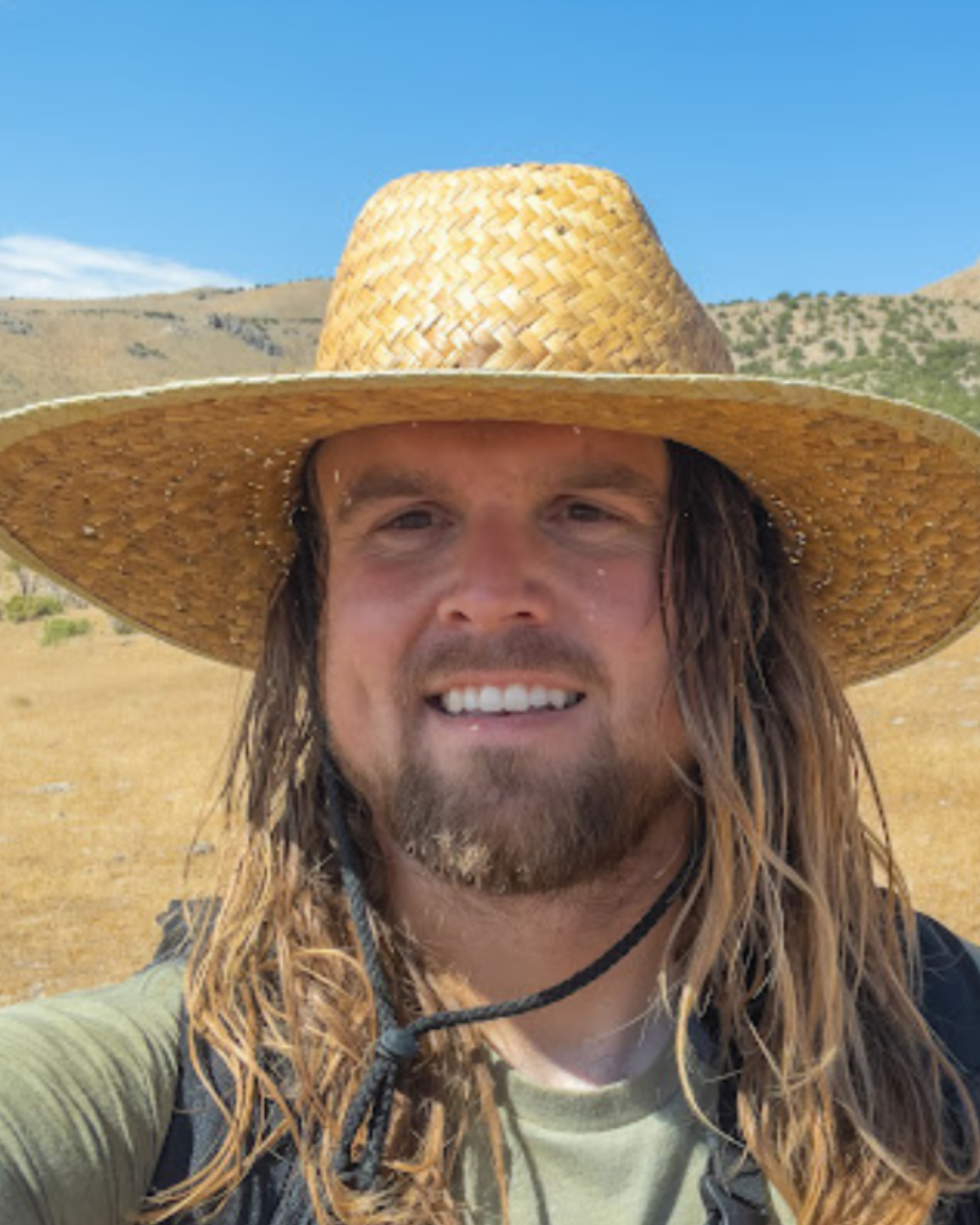 In the following year, Chapman estimates he visited the herd eighty more times. “I needed to get back to the animal side of things,” he says. In September of 2021, he quit his job and decided to track the Onaquis full time. “I got really good at identifying them,” he says. “I had a knack for finding horses that are hard to find.”
In the following year, Chapman estimates he visited the herd eighty more times. “I needed to get back to the animal side of things,” he says. In September of 2021, he quit his job and decided to track the Onaquis full time. “I got really good at identifying them,” he says. “I had a knack for finding horses that are hard to find.”
Chapman submitted his observations, including photos, to the Onaqui Catalogue Foundation, an online database that uses collaborative research to track and monitor the herd. His work caught the eye of the American Wild Horse Campaign (AWHC), who hired Chapman in May of 2022 to catalogue a lesser-known group of horses: the Cedar Mountain Herd, who live close to the Onaquis but “couldn’t be more different,” according to Chapman.
Where the Onaqui are generally docile, almost tame, and used to human presence, Cedar Mountain horses are just the opposite: mountain-dwelling mustangs with tough, rounded hooves and a healthy fear of humans, they live miles from access roads, which makes them very difficult to locate. Just fifty miles west of Salt Lake City, the Cedar Mountain HMA includes of over 200,000 acres of designated wilderness area and abuts the Onaqui Mountain HMA and Dugway Proving Ground, a U.S. military base where Cedar horses can also be found.
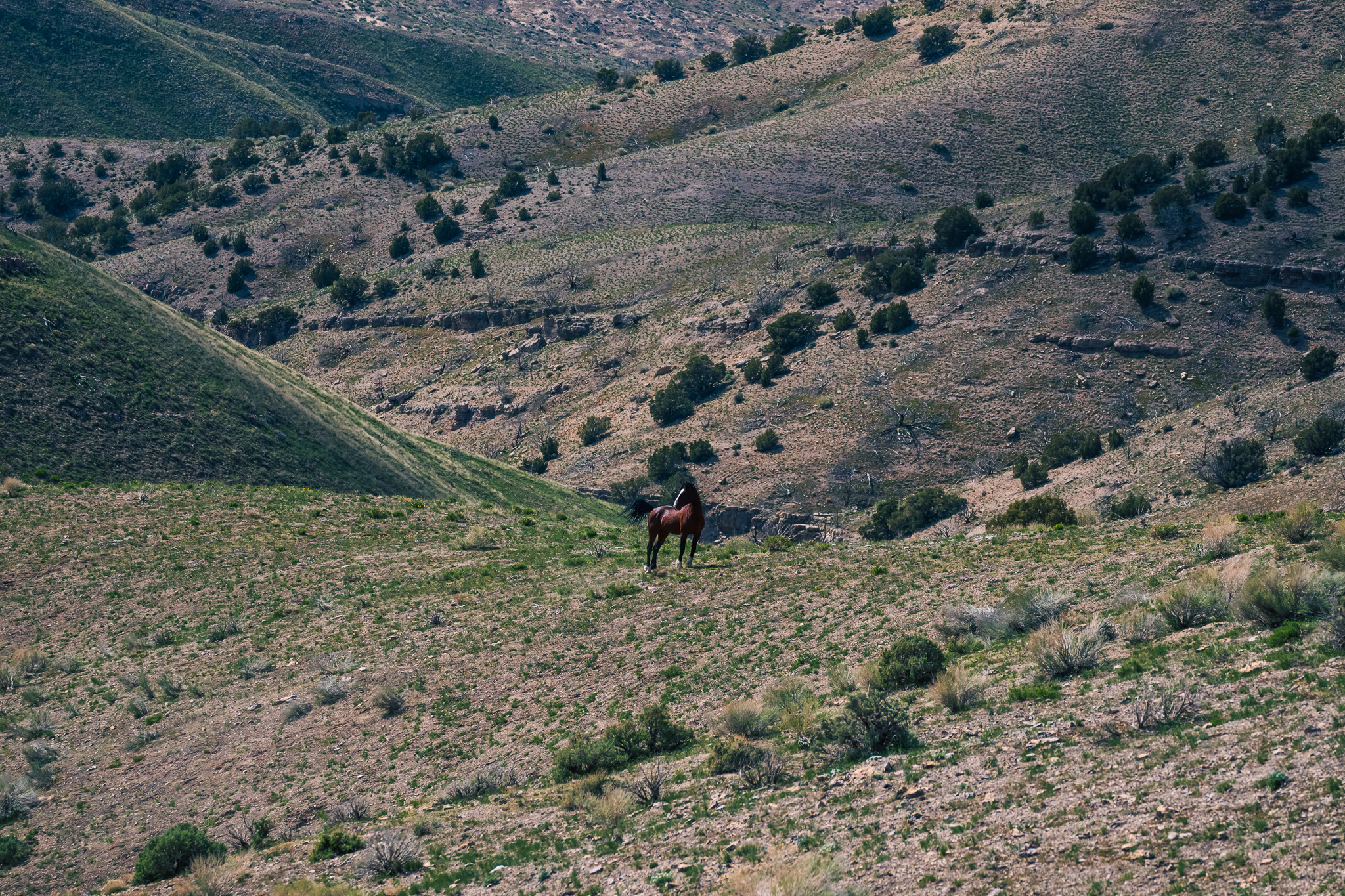
Getting to know this herd was going to be a challenge, but Chapman was not deterred. “We have to try,” he says. “We have to show that it’s possible to contact and track these herds.”
For six months, Chapman catalogued horses, spending up to two weeks at a time in a travel trailer in the mountains. By September, he had recorded and photographed 500 of the estimated 700 Cedar Mountain horses. “They are the most beautiful horses in existence,” he says.
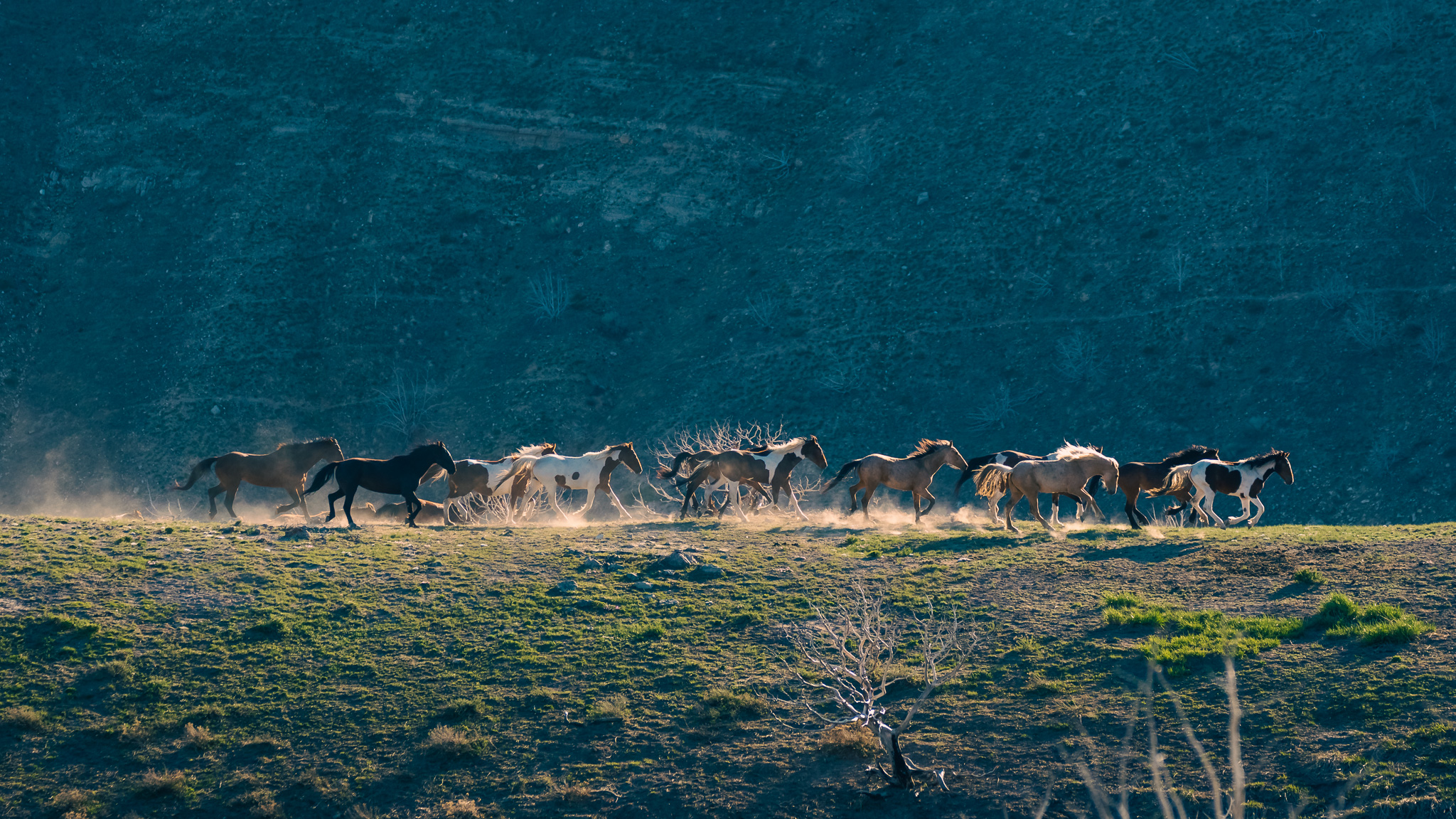
His timing couldn’t have been better. In September of that year, the Bureau of Land Management (BLM) organized a roundup of the herd, and Chapman was there to witness the event. Of the 300 horses captured by the BLM, Chapman inventoried every single one, and was also present to record the release of 100 horses back into the wild.
In October of 2022, Chapman become AWHC’s Utah Conservation Operations Manager. With a healthy knowledge of two significant herds, enviable photography skills, and an engineer’s approach to land surveying and mapping, Chapman was a natural fit. His role as Conservation Operations Manager encompasses documenting and darting herds, progressing conservation efforts across the state, and working with the BLM, other field specialists, ranchers and private landowners in wild horse areas.
“It’s about building relationships and being a credible person,” he says.
Chapman’s first major project is finishing what he started: cataloguing all Cedar Mountain horses and implementing a fertility darting program. He’s well on his way to doing that. In April of this year, he was trained in darting wild mares with PZP, a fertility vaccine that will reduce pregnancies, and he will soon build a team certified to do the same.
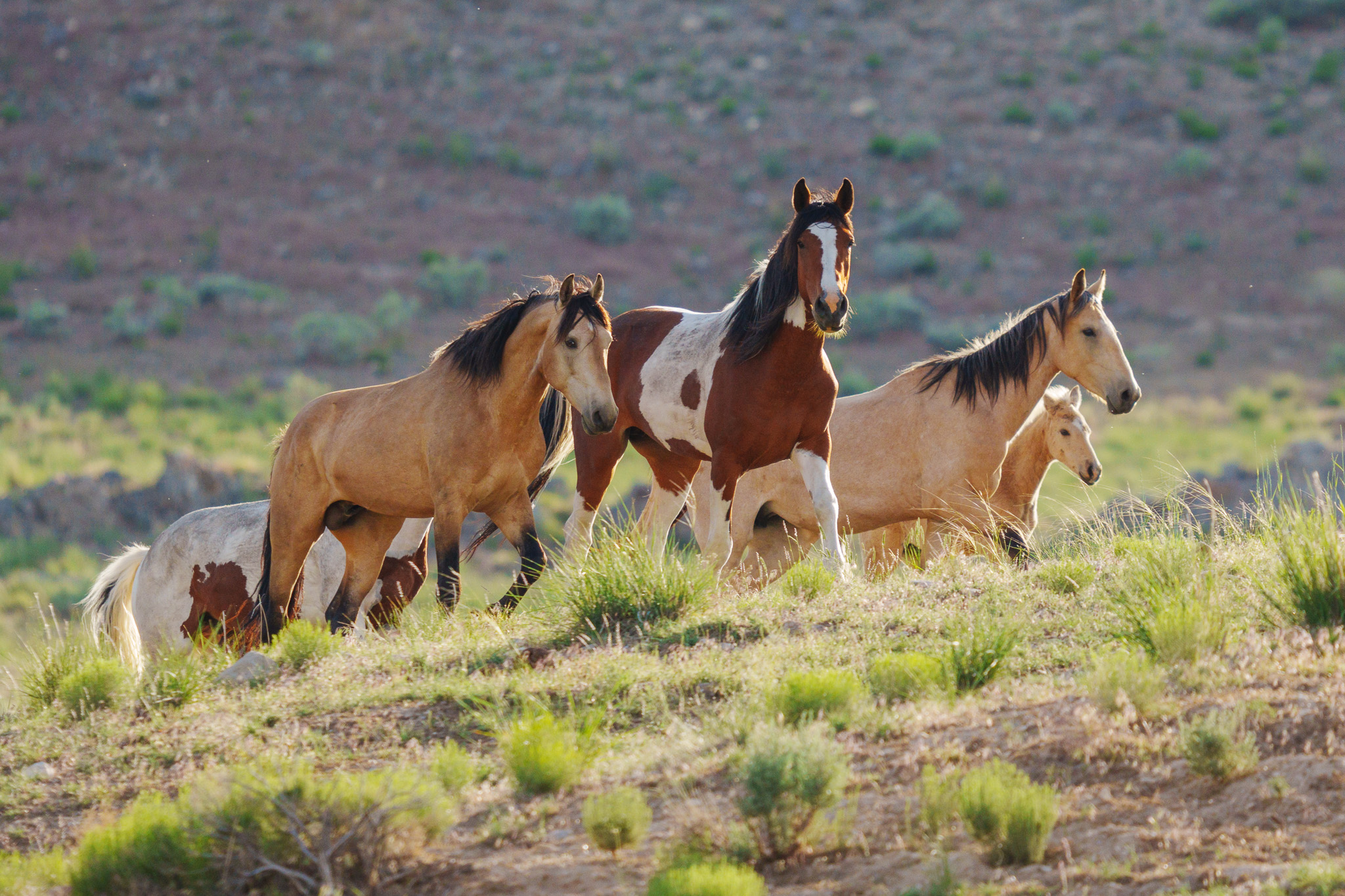
“The first step for implementing fertility control is you have to know who’s who,” he says. If Chapman is successful, the Cedar Mountain horses will endure only one more roundup, ever. With proper tracking, managing, and darting, the population of the herd will be maintained to avoid the traumatic and lethal helicopter roundups.
This, of course, is only the beginning. In Chapman’s perfect world, each Utah herd has its own catalogue, every individual is known by name and photograph, and a fertility program is in place so that wild horses can stay wild—just the way he likes them.
“What I am doing is not a job,” he says. “Getting to discover [these horses] and figure them out is an experience of a lifetime.”
Boo Geisse is the barn manager and rider at MCR's satellite location in Sonoma. She has an MFA in Creative Writing from CSU.

